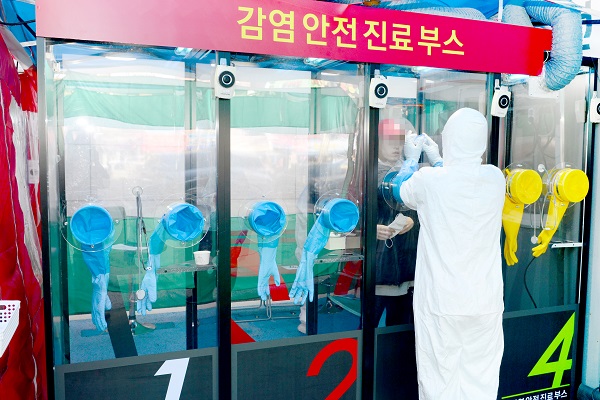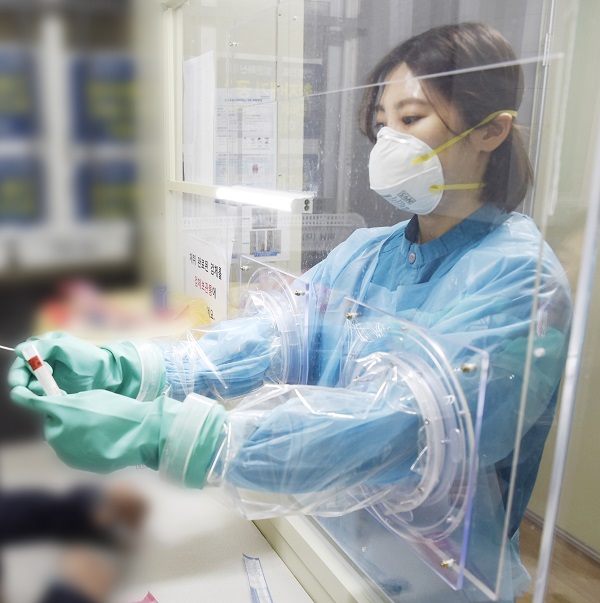After surprising the world with the drive-through screening of COVID-19, the Korean healthcare industry is coming up with yet more novel ways to detect the novel coronavirus.
One of the latest additions is the Safe Assessment and Fast Evaluation Technical booth of Yangji Hospital (SAFETY), introduced by H Plus Yangji Hospital in Seoul.
The drive-through method has the problem of securing a large space to test people in their vehicles. To address the limitation, the SAFETY system is based on a one-person screening booth that separates doctors and patients, reducing the risks of infection and allowing seniors and patients without cars to walk through the box and receive the test. Hospital officials called it the “walk-through” test.

SAFETY is a medical booth with a size of 70 centimeters in width and length and 2 meters in height. Bio Safety Cabinet designed the booth to be used for handling hazardous materials in the laboratory. Doctors can collect samples from patients without directly contacting them by using the glove attached to the box.
It is a negative pressure space maintained by the pressure device and ultraviolet lamp. The hospital also has booths customized for children. It has been running four booths, which and can test 10 patients in an hour, including the time required to disinfect the booth.
“These walk-through booths make it possible for clinics suffering from the shortage of protection gears and face masks to conduct efficient tests by reducing risks of infection,” said Kim Sang-il, director of the hospital. “We hope the SAFETY system will provide a good example for small and midsize hospitals throughout the country, which are running selective clinics with much difficulty.”
In another case, Seoul National University Boramae Medical Center has introduced the “Glove-Wall” system, which minimizes the risk of infection while sampling the virus from patients.

The Glove-Wall collection room, which began operation at the hospital’s screening center on Feb 10, has a structure similar to that of an incubator for caring infants through a hole with gloves in a glass-walled box.
The testers can collect specimen without direct contact with the examinees through an acrylic glass wall attached with a glove.
The Glove-Wall has a separate negative pressure device inside to block the outflow of internal air, and the medical provider’s space is completely separated from the patient's travel route, reducing the risk of secondary infection between medical providers and patients.
“The new system can reduce the risk of infection, and the medical providers can test and treat the patients efficiently even amid the shortage of face masks and protective clothes,” the hospital’s director, Kim Sang-il, said.
Kim added that SAFETY could also help smaller medical institutions struggling to cope with surging demand for detecting viruses.

